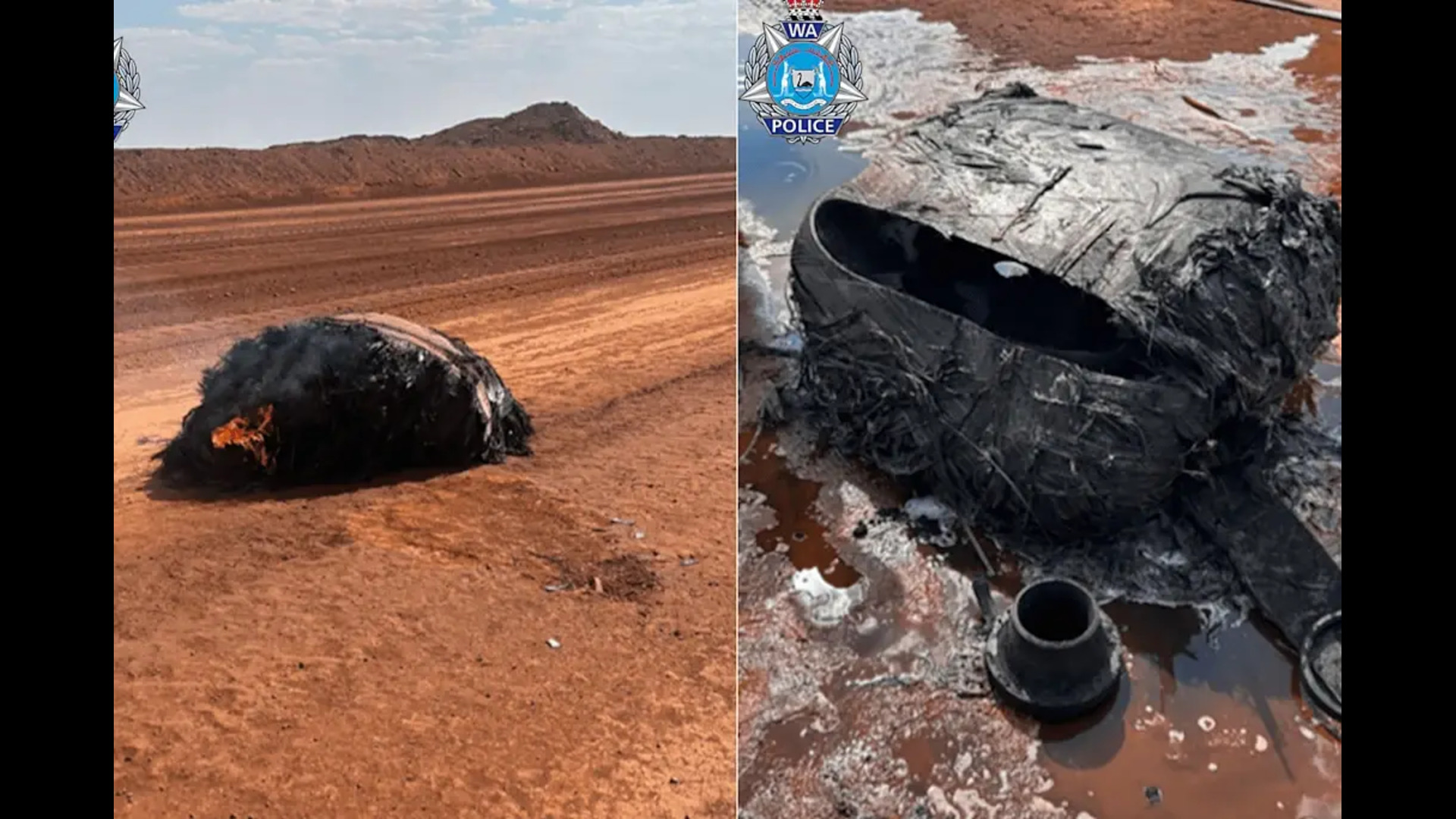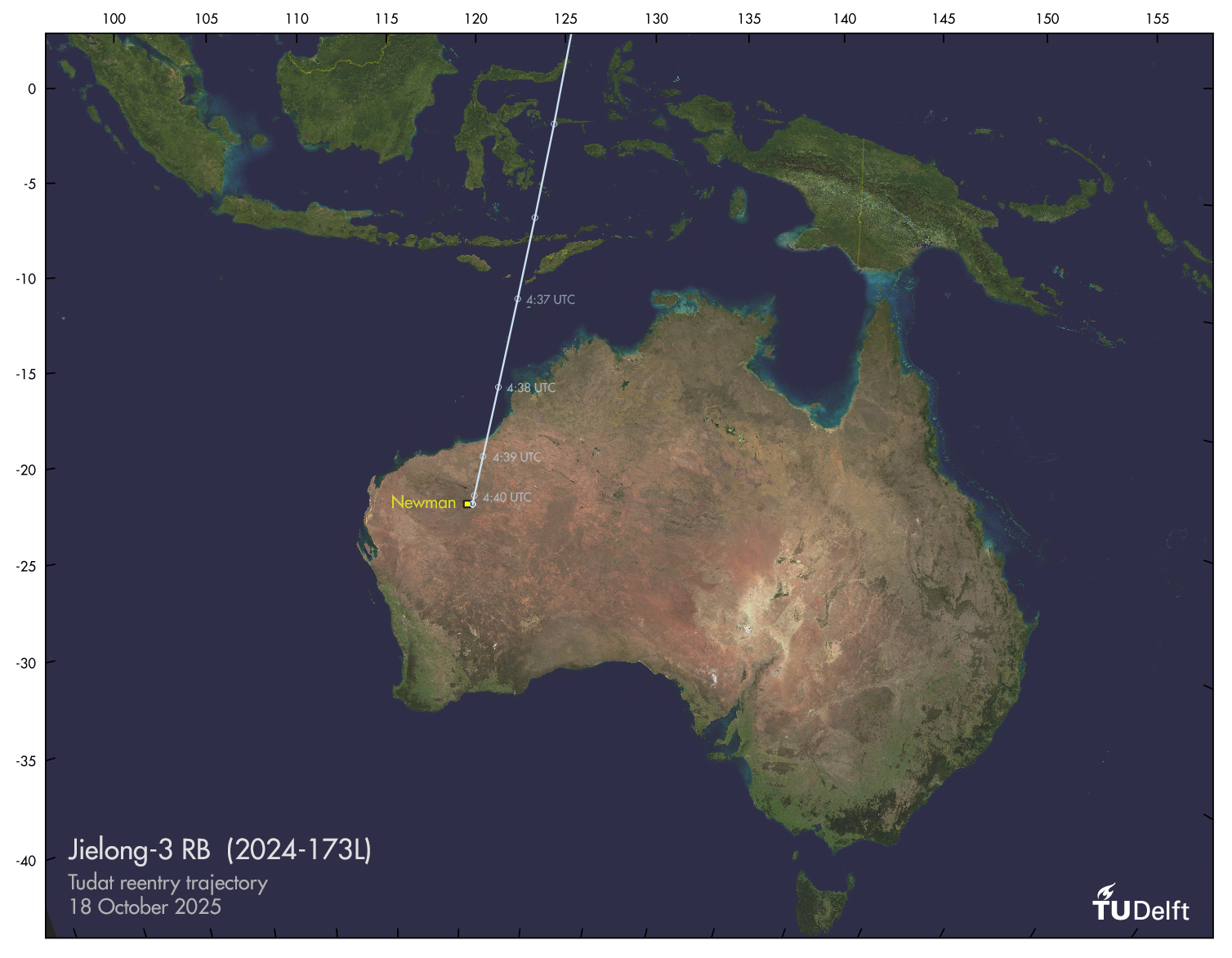
Mysterious smoldering wreckage in Australian Outback is likely part of a Chinese rocket
"It could actually be (a significant part of) the upper stage itself."

A hunk of space junk appears to have come in hot and heavy in Australia.
On Saturday (Oct. 18), mine workers found a mysterious smoking slab sitting near a remote access road some 19 miles (30 kilometers) east of Newman, Western Australia. The Western Australia Police Force visited the site and took note of the incident, as did the Australian Space Agency, which explained that it will carry out "further technical analysis to identify its origin."
But an early look at the mysterious debris suggests that it is made of carbon fiber, and is perhaps part of a rocket.
In a blog post on Monday (Oct. 20), space analyst Marco Langbroek said that the object resembles a composite overwrapped pressure vessel (COPV). COPVs hold high-pressure gases and liquids inside rockets and often survive reentry through Earth's atmosphere.
"It reportedly was burning when found, which is unusual and against expectations for space debris," Langbroek wrote in Monday's update. This suggests a very recent impact, if it was indeed space junk, he added.
Langbroek thinks it likely is orbital debris, and he named a promising source candidate — the upper stage of a Chinese Jielong 3 (also known as Smart Dragon 3) rocket, which fell back to Earth on Oct. 18.
"It could actually be (a significant part of) the upper stage itself, given the large size that the photos suggest (and also given that the Jielong 3 upper stage is reportedly a solid fuel stage)," wrote Langbroek, a specialist on astrodynamics and space missions who's on the faculty of aerospace engineering at Delft University of Technology in the Netherlands.
Breaking space news, the latest updates on rocket launches, skywatching events and more!
He sifted through a handful of candidate space objects that could be tied to the detritus.
"Of these, only one was in an orbit that would match passing close to Newman in the early hours of October 18, the Chinese Jielong 3 stage in a 97.6 degree inclined polar orbit," he wrote. He added that the rocket stage approached from the north-northeast moving toward the south-southwest.
"Not much information is known about the Jielong 3 components in terms of size and mass," Langbroek stated, but he stressed that this object is a good contender for the source of the Outback object.

Leonard David is an award-winning space journalist who has been reporting on space activities for more than 50 years. Currently writing as Space.com's Space Insider Columnist among his other projects, Leonard has authored numerous books on space exploration, Mars missions and more, with his latest being "Moon Rush: The New Space Race" published in 2019 by National Geographic. He also wrote "Mars: Our Future on the Red Planet" released in 2016 by National Geographic. Leonard has served as a correspondent for SpaceNews, Scientific American and Aerospace America for the AIAA. He has received many awards, including the first Ordway Award for Sustained Excellence in Spaceflight History in 2015 at the AAS Wernher von Braun Memorial Symposium. You can find out Leonard's latest project at his website and on Twitter.
You must confirm your public display name before commenting
Please logout and then login again, you will then be prompted to enter your display name.

